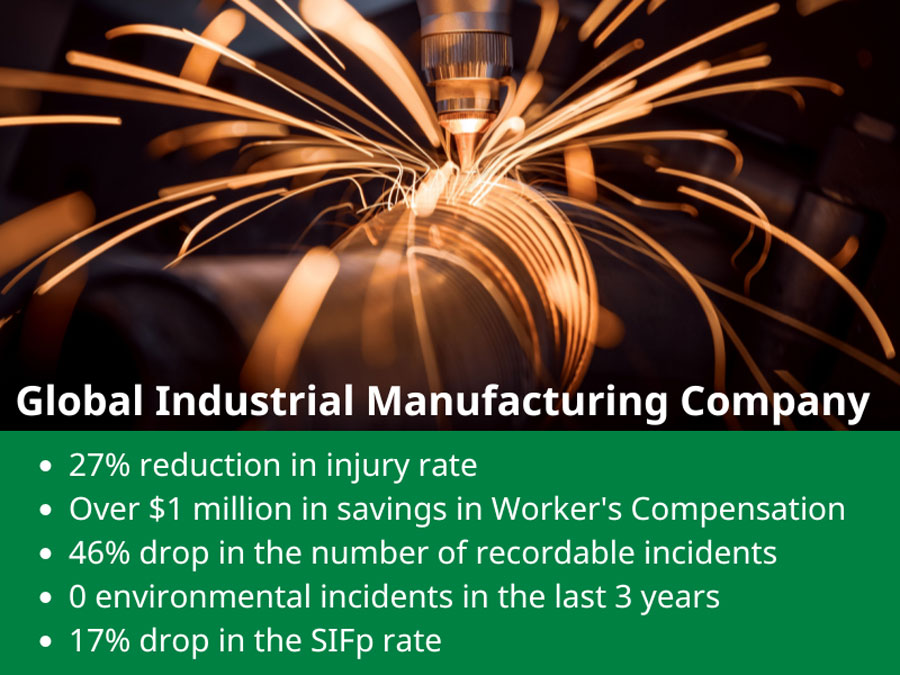
The Making Safe Decisions® Solution
Advancing high levels of precision in critical work, powered by the neuroscience of decision making

The Making Safe Decisions® Solution
Advancing high levels of precision in critical work, powered by the neuroscience of decision making
The Making Safe Decisions® Solution
Because we’re human! And human action can provoke mistakes.
Our brain functions are astounding organs. But even so, neuroscience research has found that the way our brains are designed to operate makes us vulnerable to error. In many cases, these inherent characteristics—Brain-Centered Hazards™—help our brains work efficiently. But in some cases, brain-oriented vulnerabilities can increase our exposure to injury and error. If not addressed, brain-oriented vulnerabilities are typically implicated in more than 80% of safety, quality, and efficiency issues.
The Making Safe Decisions solution teaches senior leaders, supervisors, and employees how to control Brain Centered Hazards to maximize Human and Organizational Performance (HOP).
By understanding the recent neuroscience research behind safe decision-making and recognize brain-centered hazards, leaders can take steps to enable high levels of precision, so teams are supercharged to notice drift from safe work and avoid unplanned events:
- Hone error detection skills with behavioral strategies to prevent injury and protect assets and brand reputation. Move from ‘looking’ to ‘truly seeing’ issues before they strike
- Add horsepower to your Serious Injury & Fatality prevention process
- Gain human performance tools and techniques to advance safe decision-making across levels and roles, and strengthen precision within critical tasks to avoid costly errors.
Does it work?
Consider these sample results after one year of implementing the Making Safe Decisions solution:


Implemented For Sustained Success
The five-step implementation processes play an important role in success, maximize learning within your staff, and enable ongoing progress and sustained results. Each implementation is scalable and customizable based on your organization’s needs and goals.
- Planning—Evaluating your organization’s exposure profile, understanding the safety activities leaders and teams perform, and laying out the implementation’s key steps and milestones
- Managing/Supporting—Communicating organizationally about the effort and removing obstacles to implementation
- Building Capability—Creating a team of HOP SMEs to unleash the power within front-line decision making focused on five elements of the Making Safe Decisions approach: Seeing, Thinking, Doing, Moving, and Teaming. ( Learn more about the approach .) We have a variety of modalities to deliver custom fit development that gets traction in your business
- Tracking Progress—Measuring changes in several leading indicators (e.g., hazard identification, work pauses as exposures are noticed, communication/coordination between workers, waste reduction, customer complaint reductions, engagement score improvements, and more)
- Sustaining Success—Embedding updated POV on safety and precise work techniques within the work system to reinforce and sustain progress
Part of a holistic approach to HOP improvement
Your organizational culture, leadership, systems, and processes, all play a significant role in controlling exposures and reliability to avoid unplanned risks. The Making Safe Decisions approach both complements and reinforces these critical factors that are essential to every human—and in turn, is reinforced by them. Working together, they form a holistic, highly effective approach to drive HOP improvement and keep people, property, and communities safe.
- White Paper: Working with Precision and Purpose: DEKRA’s HOP Approach
- On-Demand Webinar: Destination Safe Workplace: Navigating Your Unique HOP Lane
- On-Demand Webinar: Who Owns Human & Organizational Performance
- In-Depth Case Study: Sunbelt Rentals
- Technical White Paper: The Making Safe Decisions® Solution
- White Paper: How Making Safe Decisions® is the Solution to Overcoming Brain-Centered Hazards™
